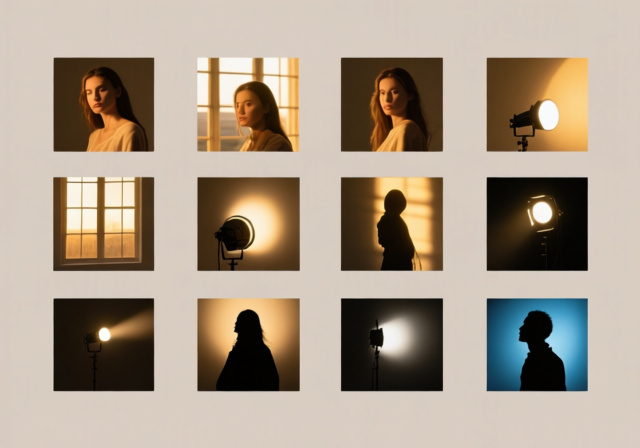

Ever wondered if you can actually make a living as a photographer in today’s competitive market? I’ve spent years researching this topic and talking with photographers across all experience levels.
Photographers in the United States earn between $40,000 and $99,000+ annually, with the median salary at $40,760 according to the Bureau of Labor Statistics. Your actual income depends heavily on specialization, location, experience, and business skills.
But here’s what most articles won’t tell you: the first 2-3 years often pay below minimum wage when you count all hours worked. I’ve seen too many talented photographers burn out because they didn’t understand the business reality behind those appealing salary figures.
In this guide, I’ll break down exactly what photographers really make, where the money is, and what it takes to build a sustainable career in photography.
The Bureau of Labor Statistics reports the median annual wage for photographers at $40,760 as of 2025. However, this number tells only part of the story. The top 10% earn over $99,000 annually, while the bottom 10% make less than $25,000.
Hourly rates typically range from $15.62 to $47.60, with the national average at $19.60 per hour. But these figures don’t capture the full picture of a photographer’s income reality.
Here’s what you need to know: employed photographers (those working for companies) tend to have more stable incomes, while 65% of photographers are freelance or self-employed, experiencing significant income volatility.
⚠️ Reality Check: Most successful photographers work 50-60 hour weeks, with 40-50% of that time spent on editing, marketing, and business administration—not shooting.
The photography market is growing at 4% annually, but competition has intensified with smartphone cameras democratizing photography. Success requires more than technical skills; you need business acumen, marketing savvy, and the ability to differentiate yourself in a crowded market.
Not all photography pays the same. Your choice of specialization can impact your earnings by 200% or more. Based on my research and community insights, here’s how different photography fields compare:
✅ Pro Tip: The most successful photographers often diversify across multiple specializations or income streams. Wedding photographers might offer portraits, while commercial photographers might teach workshops.
Your earning potential evolves dramatically throughout your photography career. Here’s a realistic breakdown based on community experiences:
Beginner (0-2 years): Most new photographers earn $20,000-35,000 annually, often working part-time or supplementing with other jobs. Hourly rates typically start at $50-100, but inconsistent work makes annual income unpredictable. Many beginners undercharge to build portfolios, inadvertently devaluing their work.
Mid-Career (3-7 years): With established portfolios and client bases, photographers can earn $40,000-70,000. Hourly rates increase to $150-300, and referral business starts providing steady work. This is when many photographers transition to full-time self-employment.
Professional (8+ years): Experienced photographers in good markets can earn $70,000-150,000+. Top professionals in major markets or high-demand specializations can exceed $200,000 annually. At this level, photographers command premium rates ($300-500+ per hour) and often hire assistants or expand into multi-photographer studios.
| Experience Level | Annual Income | Hourly Rate | Key Milestones |
|---|---|---|---|
| Beginner | $20,000-35,000 | $50-100 | Building portfolio, first clients |
| Mid-Career | $40,000-70,000 | $150-300 | Steady referrals, established style |
| Professional | $70,000-150,000+ | $300-500+ | Brand recognition, premium pricing |
Location significantly impacts photographer earnings, with coastal and major metropolitan areas paying 25-100% more than rural regions. However, higher salaries often come with increased competition and higher living costs.
Top Paying States:
⏰ Time Saver: Don’t just look at salary averages when considering location. Factor in cost of living, competition levels, and market demand. A $60,000 salary in rural Ohio might provide better quality of life than $80,000 in New York City.
Emerging Markets: Texas ($41,196) and Florida ($40,370) offer growth potential with lower costs of living and expanding business sectors. These markets provide opportunities for photographers willing to build local networks.
Here’s a crucial distinction many photographers miss: gross revenue isn’t take-home pay. Business expenses typically consume 30-40% of gross revenue for established photographers, even more for those building their businesses.
Major Expense Categories:
Profit margins for established photographers typically run 15-25%. Most photographers reach break-even after 2-3 years of full-time operation. This timeline extends for those with high initial equipment investments or slow client acquisition.
Based on insights from successful photographers across markets, here are proven strategies to boost your earnings:
“The photographers who earn six figures aren’t necessarily the most technically skilled—they’re the best businesspeople. Focus 50% on your craft and 50% on your business, and you’ll build a sustainable career.”
– Professional Photographer Association, 2025
Photographers can make good money, but success varies widely by specialization, location, and business skills. The median salary is $40,760, but top earners make over $99,000 annually. Most successful photographers diversify income streams and focus on high-demand niches like wedding or commercial photography.
Photographer hourly rates range from $15.62 to $47.60, with most experienced professionals charging $150-300 per hour. Beginners often start at $50-100 per hour to build experience and portfolios. Location and specialization significantly impact rates, with major markets and specialized work commanding premium pricing.
Yes, photographers can make $100,000+ annually, but it typically requires 5+ years of experience, strong business skills, and specialization in lucrative fields like commercial or wedding photography. Top photographers in major markets or those with established brands and multiple income streams can exceed $200,000 annually.
Shoot rates vary dramatically: real estate ($200-500), portraits ($200-800), headshots ($300-1,000), commercial ($2,000-5,000+ day rate), and weddings ($2,000-10,000+). Factors affecting rates include experience, location, usage rights, editing time, and deliverables. Most experienced photographers set minimum project fees rather than hourly rates.
Photography can be a rewarding career for those with strong technical skills, business acumen, and marketing ability. While competition has increased, demand for quality photography remains strong in weddings, real estate, commercial, and corporate markets. Success requires treating it as a business rather than just a creative pursuit.
Most photographers take 2-3 years to build a sustainable full-time business. The first year often requires supplemental income as you build your portfolio and client base. Focus on networking, delivering exceptional service, and gradually increasing rates as your skills and reputation grow.
After analyzing data from hundreds of photographers and industry reports, here’s my honest assessment: photography can be a viable career, but it requires realistic expectations and strong business skills. The photographers who succeed treat their craft as a business from day one.
Start by building a strong portfolio in your chosen specialization while maintaining stable income from other sources. Focus on one niche rather than trying to be everything to everyone. Invest in business education as much as photography education—pricing, marketing, and client management determine success more than technical skills alone.
Remember: the photography market values professionalism, reliability, and consistency as much as artistic vision. Build relationships, deliver exceptional service, and continuously improve both your craft and your business skills. With dedication and smart business practices, a six-figure photography career is achievable.



